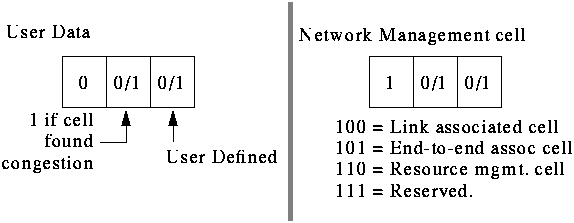
Cell Networks
Chips are available to segment and reassemble (SAR chips)
OSI ATM ATM
Layer Layer Sublayer Functionality
-------------------------------------------------------------------------------------
CS Interface (convergence), services to different applications
3/4 AAL - - - - - - - - - - - - - - - - - - - - - - - - - - - - - - - - - - -
SAR cell/packet segmentation and reassembly
-------------------------------------------------------------------------------------
Flow control
2/3 ATM Cell header generation/extraction
Virtual circuit / virtual path management
Cell multiplexing/demultiplexing
-------------------------------------------------------------------------------------
Cell rate decoupling
Header error checking (checksum)
2 TC Cell generation
Packing/unpacking cells
Frame generation
- - Physical - - - - - - - - - - - - - - - - - - - - - - - - - - - - - - - - - - -
Bit timing
1 PMD
Physical network access
-------------------------------------------------------------------------------------
AAL -- ATM Adaptation Layer
CS -- Convergence Sublayer
SAR -- Segmentation And Reassembly sublayer
TC -- Transmission Convergence sublayer
PMD -- Physical Medium Dependent sublayer
Cell networks

Cell Networks
Chips are available to segment and reassemble (SAR chips)

Cell Network Latency

Cell Network Serialisation
Increases speed of store-and-forward networks (it takes about 1 microsecond to receive a 128 byte cell on a 1 Gbit network).
Cell Format

Cell Format
ATM NNI Cell header

ATM NNI Cell header
VCI + VPI = unique routing indicator for the cell.
Like phone number, VPI is like area code (607), VCI is like phone number (555-1212) (Fig. 25.14).
Routers can use hop-by-hop routing, may route only on VPI in the network backbone.

Payload type
CLP = Cell Loss Priority. 1=low priority, 0=high priority (a hint for switches as to which cell to drop)
CRC = Header Error correction code